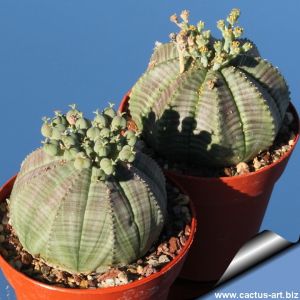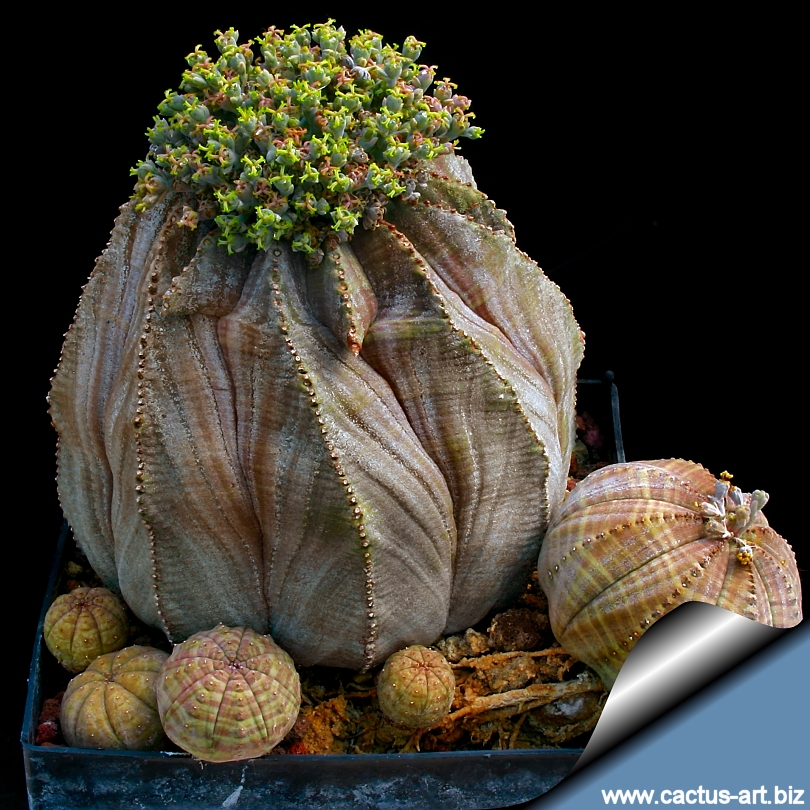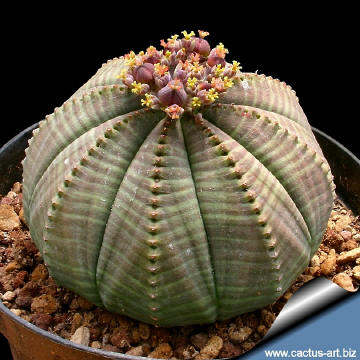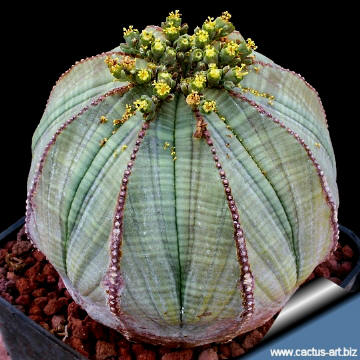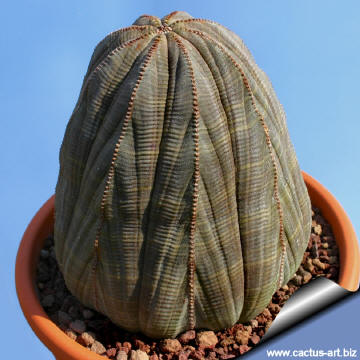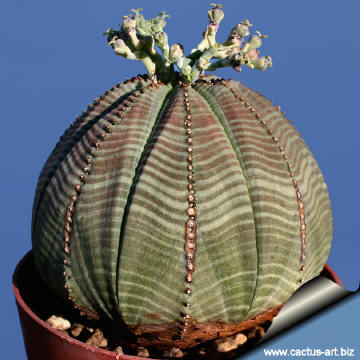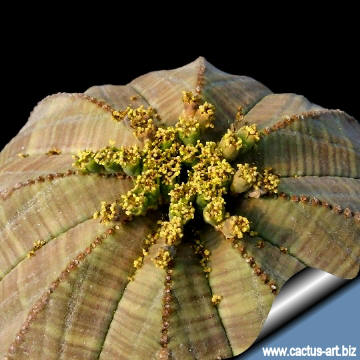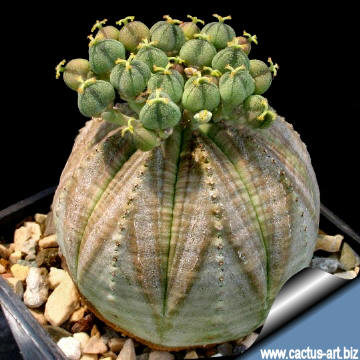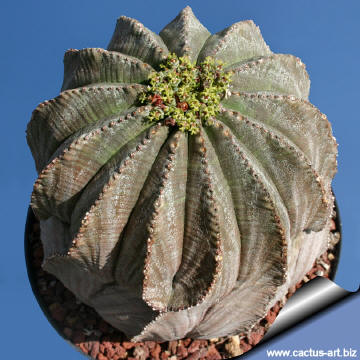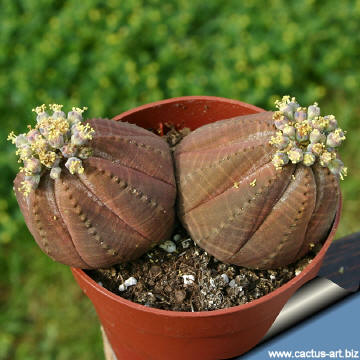-
x
Descrizione
L'euphorbia obesa e una peculiare succulenta globulare dal corpo striato che sembra un cactus, con l'età puo divenire più o meno elongata. Family: Euphorbiaceae Scientific name: Euphorbia obesa Hook. f.Common Names include: Basketball, Sea Urchin, Baseball, Living Baseball, Gingham, Golf ball, Vetmensie. Conservation status: Listed in CITES appendix 2. Origin: Euphorbia obesa is an endemic species, found in Kendrew, a small area of the Great Karroo, the Northern Cape region of South Africa, in the Graaff-Reinet district. Habitat: They are found growing in full sun or (more frequently) under the protection of low shrubs and sometime among low boulders in fairly sandy soils. Their colour blend so well with the surroundings that it is often quite difficult to distinguish them. They are found at an altitude ranging from 300 to 900 m above sea level, a place where there is no significant frost. The habitat is very stony and hilly with summer rainfall ranging from 200-300 mm per annum, falling mainly in thunder showers. Summers are very hot: the average daily maximum about 26 degrees centigrade and the minimum about 11 degrees centigrade. Light frost occurs during the winter months.
| |
| Description: It is a highly succulent solitary plant without spines or leaves that looks like a green-brown football, but will sometimes 'branch' or sucker, creating very odd looking clusters of spheres. | |
| Cultivation: It likes a sunny position, but it can also be grown outdoors where the frost is not too severe. It can tolerate temperatures down to -5°C (-10° if the roots are kept dry). It does best in a mineral soil, but is tolerant of a wide range of soil types. Good drainage is essential. Water sparingly during the summer months and keep dry in winter. It is a slow-growing, long-lived plant, and once established, it will be content in its position and with its soil for years. It can tolerate moderate shade, and a plant that has been growing in shade should be slowly hardened off before placing it in full sun, as the plant will be severely scorched if moved too suddenly from shade into sun. | |
| The famous basketball plan is very priced for its outstanding colours and symmetry.
Note: As with all other Euphorbias, when a plant get damaged it exudes a thick white milky sap known as latex. This latex is poisonous and may irritate skin Euphorbia obesa is a wonderful example of convergent evolution. In fact it incredibly resembles Astrophytum asterias. Propagation: It is propagated from seed sown during spring or summer. Germination occurs within 3 weeks, but it can be reproduced by cuttings as well (if available). Flowering can be achieved within 5-8 years.
| |

